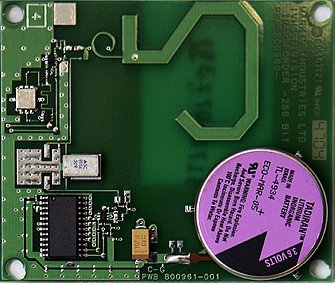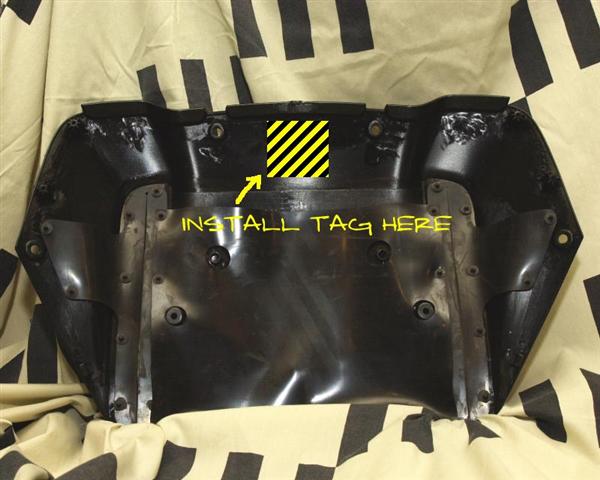You are here: STWiki>General Web>TollTransponders (02 Jun 2009, MarkFeit)Edit Attach
Toll Transponders
A number of states in the U.S. and other places around the world have installed electronic toll collection (ETC) systems which allow drivers to pay toll without having to stop. ETC means a huge safety advantage for riders, who no longer have to stop in the oily sludge that accumulates on the floor of toll booths. ETC systems work by having a reader (usually large, rectangular device with a flat side facing incoming cars at an angle) with a couple of antennas in it installed over each lane. One antenna sends out a radio signal that causes a vehicle-mounted transponder to turn on, send some identifying information and go back to sleep. The other antenna receives the information and sends it back to a central system that manages your account. If your account has enough funds to pay the toll, the system tells the toll booth to allow you through. This table lists known ETC programs:| Locality | Program | Web Site | Transponder |
|---|---|---|---|
| United States | |||
| California | Fastrak® (No. CA & parts of So. CA) | http://www.bayareafastrak.org/ | Unknown |
| Delaware* | http://www.ezpassde.com | Mark IV Flat Pack | |
| Florida | E-Pass, O-Pass, SunPass | http://www.expresswayauthority.com | Unknown |
| Georgia | Cruise Card | TransCore eGo | |
| Illinois* | I-Pass | http://www.illinoistollway.com | Mark IV Flat Pack |
| Kentucky | Mark IV Flat Pack | ||
| Michigan | Mark IV Flat Pack | ||
| New Hampshire* | Mark IV Flat Pack | ||
| New Jersey* | E-ZPass | http://www.ezpass.com | Mark IV Flat Pack |
| New York* | E-ZPass | http://www.ezpassny.com | Mark IV Flat Pack |
| Maine* | Mark IV Flat Pack | ||
| Maryland* | Mark IV Flat Pack | ||
| Massachussetts* | Mark IV Flat Pack | ||
| Pennsylvania* | Mark IV Flat Pack | ||
| South Carolina | Mark IV Flat Pack | ||
| Texas (Harris County) | EZ Tag | http://www.eztagstore.com | Unknown |
| Virginia* | Smart Tag | http://www.smart-tag.com | Mark IV Flat Pack |
| West Virginia* | Mark IV Flat Pack | ||
| Canada | |||
| Ontario | Highway 407 ETR | http://www.407etr.com | Mark IV Fusion |
Installation Considerations
Inside the transponder is a circuit board with, among other things, a small antenna etched into it:
- Read Angle. The readers are mounted in such a way that the transponder is turned on and read ahead of your arrival in the lane. Ideally, you want to mount your transponder so the side you'd stick to your windshield is about parallel to the face of the reader. Next time you run through a lane, make a good mental note of the angle; that's what you want to shoot for. The adjustable windshield of an ST is not going to be a good candidate, because the upper half its range of motion isn't going to make for a good angle. Sitting flat in a tank bag isn't particularly good, either.
- Material Between Transponder and Reader. Glass and most plastics are RF-transparent and don't pose much of a problem. The catch here is anything metal, which is going to absorb or scatter RF that hits it. Some paints (possibly the silver on the 2003s) have metal flakes that are fairly dense and may cause problems. Some window tints are semi-metallic and behave like metal foil. The top layer of the lettering on the Honda badge over the ST's headlight probably has some metallic content, so if you mount behind there, try to shoot for a spot where it isn't in the way. Some systems operate at 2.4 GHz, which is the resonant frequency of water, so any bodies (yours, passenger's) between the transponder and the reader will likely block the signal.
- Battery Condition. This is the thing over which you have the least control. A fresh one will give you a good read at almost any angle because the return signal pretty much leaks out all sides. Most of that leakage drops off as the battery starts to drain, at which point a transponder not mounted in a good spot will appear flaky. Battery condition on a "new" tansponder is pretty much random, because you never know how long it sat on the shelf before you got it or if someone else had the transponder befrore you. MarkFeit reports that he installed a known-brand-new transponder when Virginia's Fastoll system opened in 1996 and got almost five years out of it at 20 uses per week. Its replacement worked for only two years under those conditions.
Permanent Installation
Upper Cowl
Most transponders should work mounted on the inside of the upper cowl, as shown here:
Saddlebag
The front part of a saddlebag at an angle facing the readers is another possibility. This may work, but probably not reliably. Odds are good that the rider (and almost definitely any passenger) will block the signal. Some material in this topic was adapted from this thread at ST1300.US. -- MarkFeit - 15 Apr 2005Edit | Attach | Print version | History: r1 | Backlinks | View wiki text | Edit wiki text | More topic actions
Topic revision: r0 - 02 Jun 2009, MarkFeit
 Copyright © by the contributing authors. All material on this collaboration platform is the property of the contributing authors.
Copyright © by the contributing authors. All material on this collaboration platform is the property of the contributing authors. Ideas, requests, problems regarding STWiki? Send feedback
